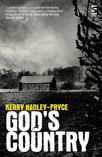Richard Long: A Line Made By Walking
- Kerry Hadley
- Feb 25, 2018
- 2 min read
I watched a documentary on BBC4 - no idea what it was called but it was about art. In truth, I watched it becau

se there wasn't anything else worth watching and I just wanted to watch something. In it, there were a series of one-word titles which seemed to have been the inspiration for artists, one of which was 'Walking' and the main subject was Richard Long, and projects he performed (notice that word, 'performed') by walking. One was 'A Line Made by Walking'. I can't put it better than this, from 2007's gallery label on http://www.tate.org.uk/art/artworks/long-a-line-made-by-walking-p07149
'This formative piece was made on one of Long’s journeys to St Martin’s from his home in Bristol. Between hitchhiking lifts, he stopped in a field in Wiltshire where he walked backwards and forwards until the flattened turf caught the sunlight and became visible as a line. He photographed this work, and recorded his physical interventions within the landscape. Although this artwork underplays the artist’s corporeal presence, it anticipates a widespread interest in performative art practice. This piece demonstrates how Long had already found a visual language for his lifelong concerns with impermanence, motion and relativity.'
But, the more important and interesting use of walking was Long's Walking a Straight Ten Mile Line across Exmoor

Nicholas Alfrey wrote about how this walk was as much about boundaries as it was about open spaces here: http://www.tate.org.uk/research/publications/tate-papers/17/ten-miles-on-exmoor which is, in itself, an interesting and different look at psychogeographic art.
In the documentary on BBC4, the commentator did the same walk, through fields, skirting a river etc. in a straight line, but the end of the ten miles was simply the end. There was nothing special there. It was just a wood, a little forest. The 'art' was in the walking itself, and the process. Long performs many walks. Here's a link: http://www.richardlong.org/textworks.html and essentially, there is psychogeography here. His observations are often sparse, for example 'Dartmoor Time':

This made me think about both my writing process with this novel, and with the way I might write about my female protagonist as a walker. Perhaps she is an artist after all. Actually, this would make things much clearer for me, as the writer of her walk and would refocus my writing. Perhaps she had set out on a Fibonacci Walk, or, say, a Black Country Canal walk, or a River Stour walk. This would give her more purpose, for sure. Tomorrow, I'll set about seeing what happens to her if she is this kind of flaneuse and whether what I'm writing about is as much about boundaries as it is about open space.









Comments